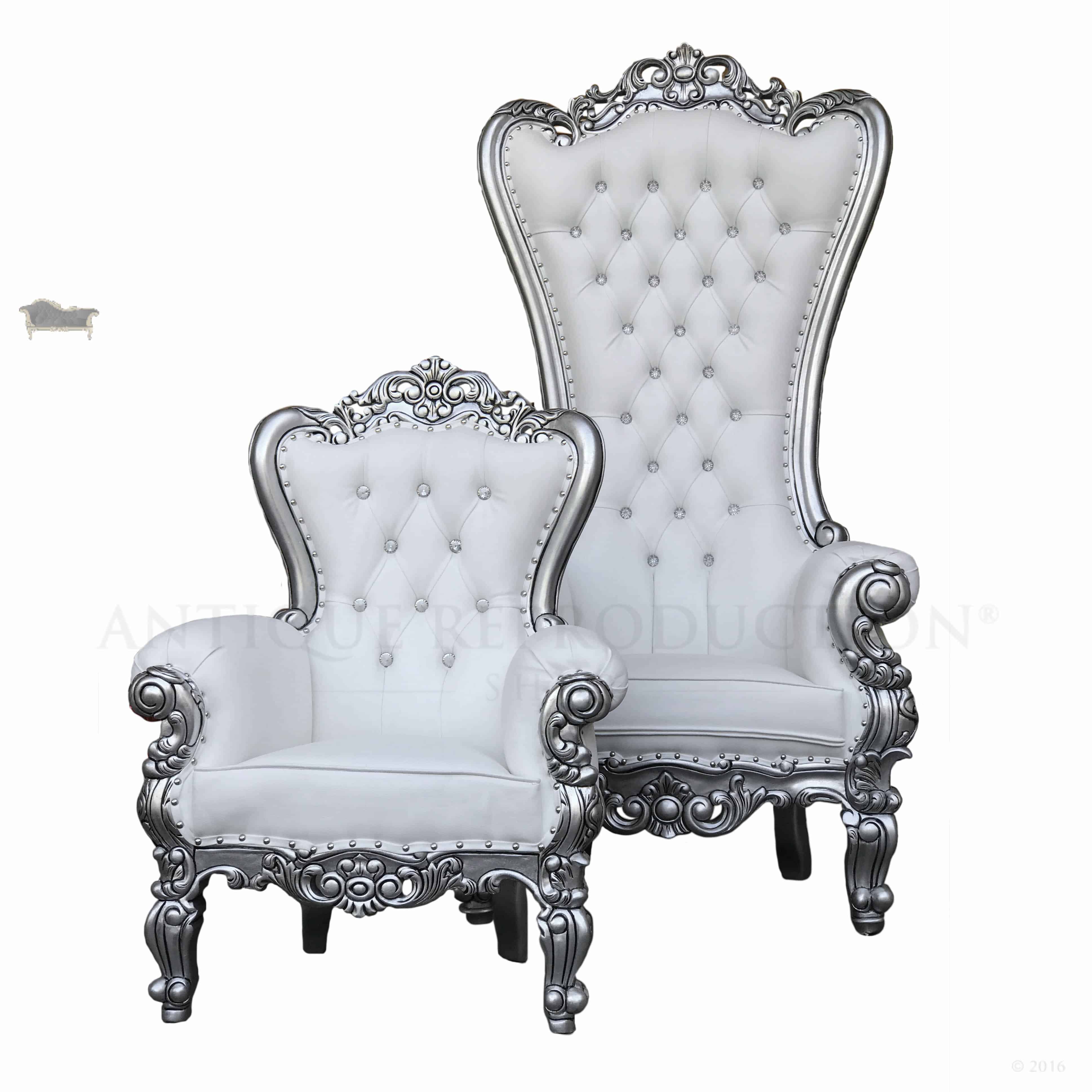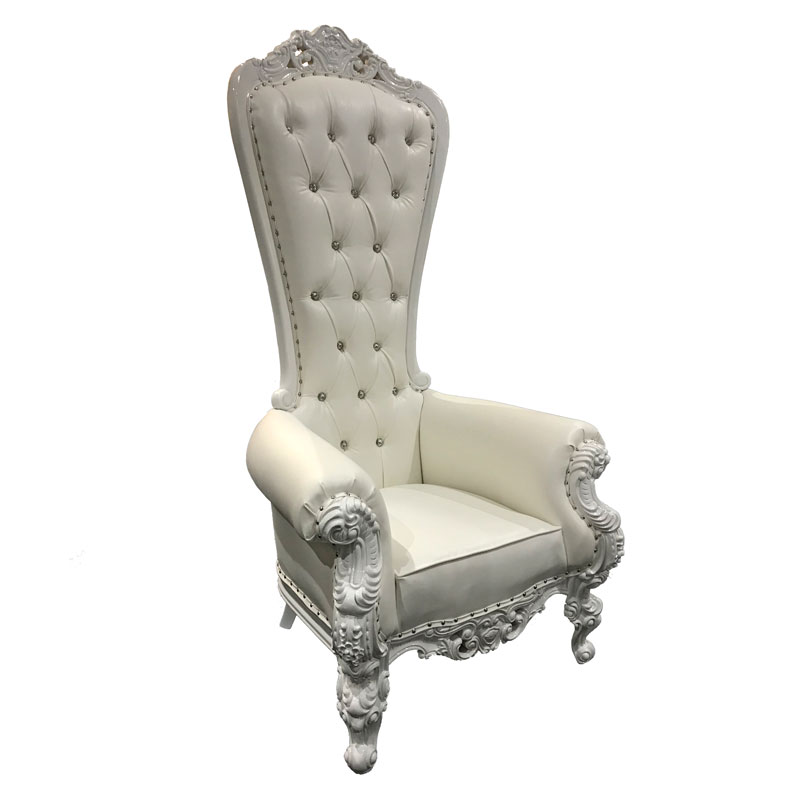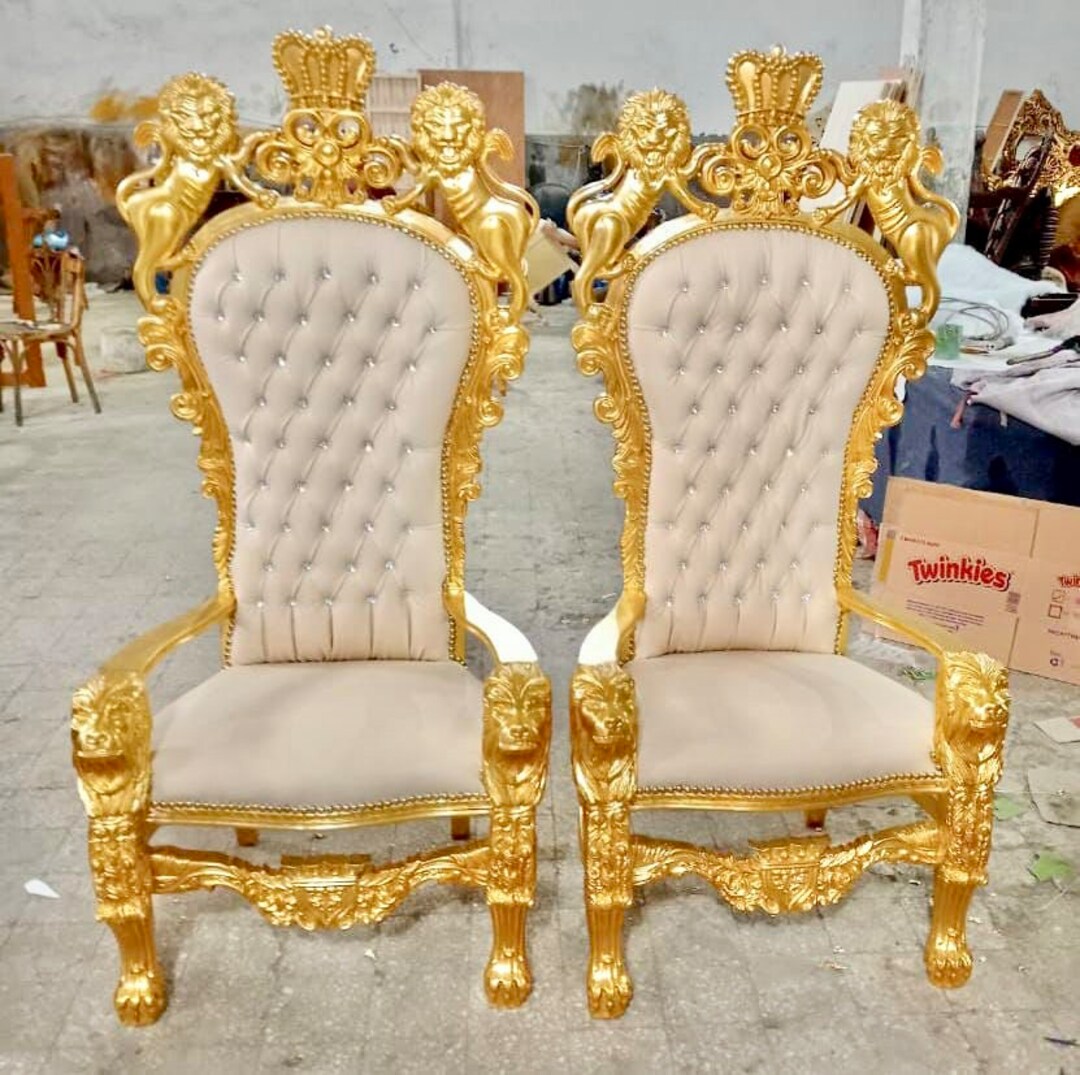History and Significance of White Throne Chairs: All White Throne Chair

The white throne chair, a symbol of power, purity, and authority, has a rich and diverse history across various cultures. From ancient empires to modern-day societies, the white throne chair has held a significant place in rituals, ceremonies, and political systems.
Historical Origins of White Throne Chairs
The use of throne chairs can be traced back to ancient civilizations. In ancient Egypt, pharaohs, considered divine rulers, sat on elaborate thrones, often adorned with gold and precious stones. The throne symbolized their absolute power and connection to the gods. The color white, associated with purity and divinity, was often incorporated into the throne’s design.
Symbolic Meanings of White Throne Chairs
The white throne chair carries significant symbolic meanings that have evolved over time.
- Power and Authority: The white throne chair represents the ruler’s supreme authority and dominance. Its elevated position and often elaborate design distinguish the ruler from ordinary citizens.
- Purity and Holiness: White, often associated with purity, innocence, and divinity, reinforces the ruler’s legitimacy and moral authority. This association with purity is particularly prominent in religious contexts.
- Justice and Fairness: The white throne chair symbolizes the ruler’s commitment to justice and fairness. Its association with the color white, representing impartiality and objectivity, reinforces this idea.
Use of White Throne Chairs in Different Historical Periods, All white throne chair
The use of white throne chairs has varied across different historical periods and contexts.
- Ancient Rome: Roman emperors used ivory and gold-plated thrones to showcase their power and wealth. The color white, while not as prominent as in other cultures, was still associated with purity and divine favor.
- Medieval Europe: During the medieval period, kings and queens sat on elaborate thrones, often adorned with precious metals and gemstones. White, symbolizing purity and holiness, was frequently used in the design of royal thrones, reflecting the close connection between religion and monarchy.
- Eastern Cultures: In many Eastern cultures, the white throne chair has held a prominent place in religious and political contexts. For example, the Dalai Lama’s throne is white, symbolizing his spiritual authority and purity.
Design and Style Variations of White Throne Chairs

White throne chairs, symbolizing power and authority, exhibit a wide array of design variations that reflect different historical periods, cultural influences, and aesthetic preferences. These variations encompass the materials used, the intricate carving, the upholstery choices, and the embellishments that adorn these majestic pieces of furniture.
Materials Used in White Throne Chairs
The choice of materials for white throne chairs has evolved over time, reflecting advancements in craftsmanship and the availability of resources.
- Wood: Oak, mahogany, walnut, and cherry are common hardwoods used for their durability and rich grain patterns. These woods are often carved and polished to create intricate details and a luxurious finish.
- Metal: Iron, bronze, and brass are frequently used for embellishments, such as frames, legs, and decorative elements. These metals add a touch of grandeur and can be gilded or patinated for a more elaborate look.
- Upholstery: Leather, velvet, brocade, and silk are traditional choices for upholstery, providing comfort and a luxurious feel. The upholstery can be plain or intricately patterned, reflecting the overall style of the chair.
Carving and Embellishments
Carving is a prominent feature of many white throne chairs, showcasing the skill of the craftsman and adding intricate details that enhance the chair’s visual appeal and symbolic meaning.
- Floral motifs: Roses, lilies, and other flowers are frequently incorporated into the carving, symbolizing beauty, purity, and royalty.
- Animal motifs: Lions, eagles, and other creatures often represent strength, power, and authority.
- Geometric patterns: Geometric designs, such as scrolls, acanthus leaves, and chevrons, add a sense of order and sophistication.
- Heraldry: Coat of arms, crests, and other heraldic symbols are often included to signify lineage, rank, or specific affiliations.
Styles of White Throne Chairs
The design of white throne chairs has evolved over time, reflecting the prevailing architectural and decorative styles of different eras.
- Victorian: Victorian white throne chairs are characterized by elaborate carving, opulent upholstery, and a focus on comfort. They often feature high backs, padded armrests, and intricate details inspired by Gothic and Renaissance styles. The use of dark woods, such as mahogany and walnut, is common.
- Gothic: Gothic white throne chairs emphasize verticality and pointed arches. They often feature intricate tracery, stained glass, and a dark, mysterious aesthetic. The use of oak and other hardwoods is prevalent.
- Art Deco: Art Deco white throne chairs showcase geometric patterns, bold colors, and a streamlined, modern aesthetic. They often feature chrome accents, luxurious fabrics, and a sense of glamour. The use of exotic woods and materials, such as ebony and ivory, is common.
Key Characteristics of Different White Throne Chair Styles
| Style | Materials | Carving | Upholstery | Embellishments |
|---|---|---|---|---|
| Victorian | Mahogany, walnut | Elaborate, floral motifs, scrolls | Velvet, brocade | Gilded accents, tassels, fringe |
| Gothic | Oak | Intricate tracery, pointed arches | Leather, velvet | Stained glass, iron accents |
| Art Deco | Ebony, ivory | Geometric patterns, stylized forms | Silk, velvet | Chrome accents, geometric patterns |
Contemporary Uses and Interpretations of White Throne Chairs

The white throne chair, a symbol of power and authority, has transcended its historical context and found new interpretations and uses in contemporary settings. From homes to offices and public spaces, the white throne chair continues to evoke a sense of grandeur and importance, while also adapting to modern aesthetics and design sensibilities.
Contemporary Settings and Symbolism
The white throne chair’s symbolic power has led to its adoption in various contemporary settings. In homes, white throne chairs often serve as statement pieces in living rooms or bedrooms, adding a touch of elegance and sophistication. They can be used as focal points, drawing attention to a particular area or creating a sense of grandeur. In offices, white throne chairs can be used to symbolize leadership and authority, particularly in executive suites or boardrooms. They can create a sense of prestige and professionalism, conveying a message of power and influence. In public spaces, such as museums, art galleries, or historical sites, white throne chairs can be used to evoke a sense of history and tradition. They can also be used as display pieces, showcasing the chair’s intricate design and craftsmanship.
The use of white throne chairs in contemporary settings often reflects a desire to evoke a sense of power, authority, and tradition. They can be used to create a sense of grandeur, sophistication, and prestige, while also adding a touch of history and artistry to modern spaces.
White Throne Chairs in Art, Literature, and Popular Culture
White throne chairs have been featured in various forms of art, literature, and popular culture, further solidifying their iconic status and contributing to their contemporary interpretations.
- In art, white throne chairs have been depicted in numerous paintings and sculptures throughout history. For instance, the famous painting “The Coronation of Napoleon” by Jacques-Louis David features Napoleon seated on a golden throne, symbolizing his power and authority. This iconic image has influenced numerous other artworks, solidifying the white throne chair’s association with power and grandeur.
- In literature, white throne chairs often symbolize power, authority, and royalty. For example, in J.R.R. Tolkien’s “The Lord of the Rings,” the character of Gandalf the Grey sits on a white throne in Rivendell, signifying his wisdom and authority. The white throne chair’s symbolic power is further reinforced by its association with powerful and influential characters.
- In popular culture, white throne chairs have been featured in numerous films, television shows, and video games. For instance, in the popular television show “Game of Thrones,” the Iron Throne is a prominent symbol of power and authority, reflecting the show’s themes of political intrigue and struggle for dominance. The white throne chair’s association with power and authority is further reinforced by its use in popular culture, making it a recognizable symbol in contemporary society.
The use of white throne chairs in art, literature, and popular culture further reinforces their symbolic power and contributes to their contemporary interpretations. These representations have helped to solidify the white throne chair’s association with power, authority, and grandeur, making it a recognizable and enduring symbol in modern society.
All white throne chair – An all-white throne chair is a statement piece, perfect for a dramatic entryway or a sophisticated dining room. If you’re looking for a more casual and practical option, consider a lavon 5 piece counter table and chair set for your kitchen or breakfast nook.
It’s a great way to add a touch of style without sacrificing comfort. Either way, a touch of white can brighten up any space and create a sense of calm.
An all-white throne chair can be a striking centerpiece, but its starkness can also feel a bit cold. Perhaps adding a touch of complexity, like the intricate patterns found in the mandelbrot set and chaos theory , could soften the look.
Imagine the chair’s fabric subtly echoing the endless, mesmerizing detail of a fractal, adding a layer of intrigue to the overall design.
